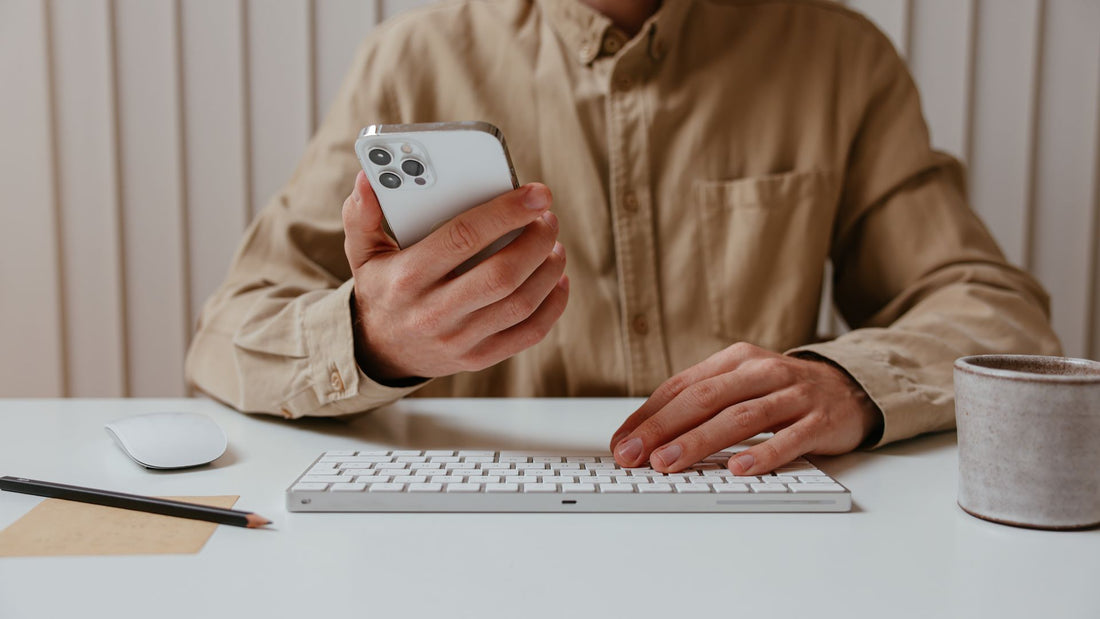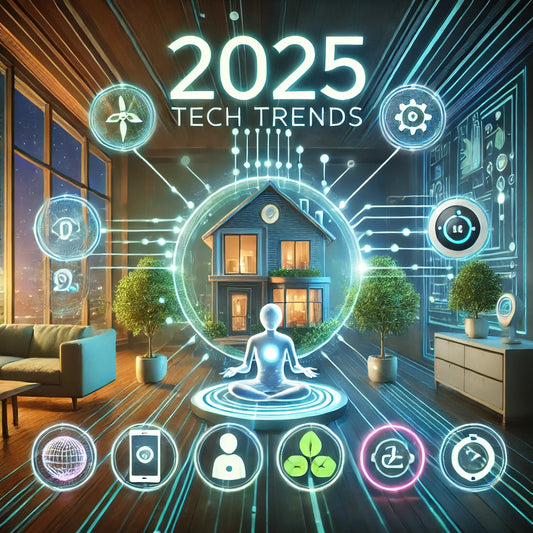
When to Charge Your iPhone for Maximum Battery Life
Anthony JucoShare
Maintaining the health of your iPhone’s battery can significantly extend its lifespan and ensure optimal performance. Charging habits play a crucial role in preserving battery capacity over time. In this blog, we’ll explore the best practices for charging your iPhone to maximize battery life.
Should You Charge Your iPhone When the Battery is About to Die?
One of the most widespread misconceptions is that you should wait to charge your iPhone until the battery is almost entirely dead. However, this isn’t true. Lithium-ion batteries, which iPhones use, degrade the least when kept between a 20% and 80% state of charge.
It’s unnecessary to let your iPhone battery fully die before charging it. Instead, charging your iPhone whenever it’s convenient and not waiting for it to die regularly will not shorten the battery’s life. In fact, avoiding frequent deep discharges helps preserve your battery's health over time.
Understanding How Your iPhone Battery Works
iPhones use lithium-ion batteries, which are known for their efficiency, longevity, and fast charging capabilities. These batteries work in charge cycles, where one cycle is completed when you've used 100% of your battery's capacity, whether it’s all at once or spread over multiple charges.
For example, if you use 50% of your battery today and recharge it fully overnight, then use another 50% tomorrow, that equals one full charge cycle. Lithium-ion batteries typically retain 80% of their capacity after about 500 charge cycles.
Best Time to Charge Your iPhone for Maximum Battery Health
To prolong your iPhone battery's lifespan, consider these tips for optimal charging times:
1. Keep Your Battery Between 20% and 80%
Avoid letting your battery drain completely or charge to 100% regularly. Staying within the 20-80% range reduces stress on the battery and minimizes wear.
- Charge your phone when it hits 20-30%.
- Unplug your phone once it reaches around 80%.
Apple’s Optimized Battery Charging feature can help manage this for you by learning your habits and delaying charging past 80% until necessary.
2. Avoid Overnight Charging
Charging your iPhone overnight to 100% can expose the battery to prolonged high voltage, which accelerates wear and tear. While modern iPhones are designed to stop charging when full, the small trickle charges to maintain 100% still contribute to degradation.
Pro Tip: If overnight charging is unavoidable, use the Optimized Battery Charging feature to mitigate the impact.
3. Don’t Let Your Battery Drain to Zero
Frequent deep discharges (letting your battery drain to 0%) strain lithium-ion batteries. Allowing the battery to drop below 10% frequently can shorten its lifespan.
- Once in a while (e.g., once a month), it’s okay to let your battery drain fully to recalibrate the battery indicator, but this isn’t necessary for daily use.
4. Charge in Short Sessions
Frequent short charging sessions are better than deep cycles. For example, charging from 40% to 70% a few times a day is healthier for your battery than a single charge from 10% to 100%.
Tips to Avoid Battery Damage While Charging
1. Use the Right Charger
Always use Apple-certified chargers or reputable third-party chargers that meet safety standards. Cheap, uncertified chargers can damage your iPhone’s battery over time.
2. Avoid Charging in Extreme Temperatures
iPhone batteries perform best in temperatures between 32°F and 95°F (0°C to 35°C).
- Avoid overheating: Don’t charge your phone under direct sunlight or in a hot car.
- Protect it from freezing: Charging in cold temperatures can cause temporary battery damage.
3. Remove the Case While Charging
Some cases can trap heat while charging, leading to overheating. If you notice your iPhone getting too warm during charging, remove the case to allow for better airflow.
Does Fast Charging Hurt Your iPhone Battery?
Fast charging is convenient, especially when you're in a hurry. Modern iPhones can handle fast charging safely, but frequent fast charging can generate more heat, which may degrade the battery faster over time.
Tip: Use fast charging sparingly. For regular charging, a standard charger is gentler on the battery.
How Apple’s Features Protect Your Battery
Apple includes several built-in features to help preserve battery health:
- Optimized Battery Charging: This feature delays charging past 80% until you need it, reducing time at full charge.
- Battery Health Monitor: You can check your battery's maximum capacity in Settings > Battery > Battery Health & Charging.
- Performance Management: iPhones automatically manage performance to prevent unexpected shutdowns as the battery ages.
The Bottom Line
To maximize your iPhone’s battery life, follow these best practices:
- Charge between 20% and 80%.
- Avoid overnight charging.
- Don’t let your battery drain to 0% frequently.
- Use Apple-certified chargers and avoid extreme temperatures.
Adopting these habits can help maintain your iPhone's battery health, ensuring that it lasts longer and performs efficiently. By taking care of your battery, you’ll also reduce the need for replacements, saving time and money.
Recommended Product for Safe and Efficient Charging
If you're looking for a reliable wireless charger, consider the PowerPod. With 15W fast charging, it's designed to safely and efficiently charge your iPhone, AirPods, and Apple Watch. It even doubles as a phone stand, allowing you to choose the perfect viewing angle for checking updates or watching movies. Compact and sleek, the PowerPod complements any home or office setup.




